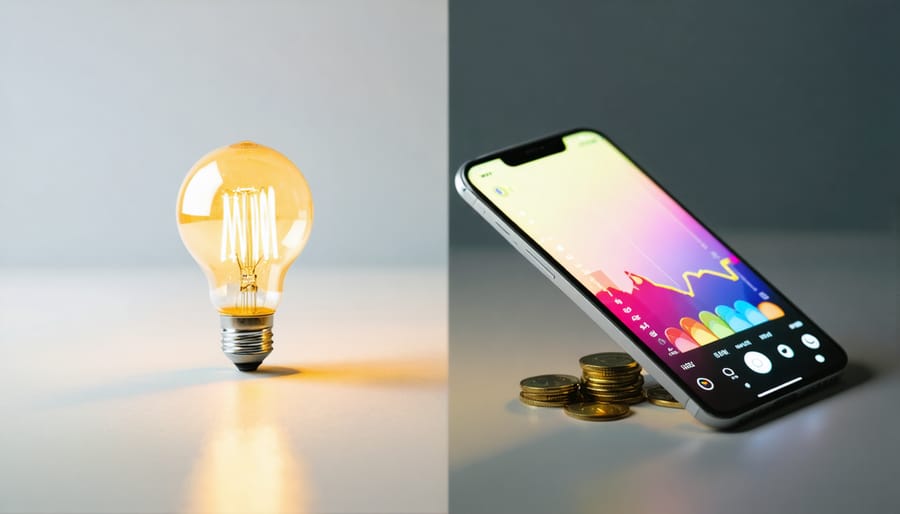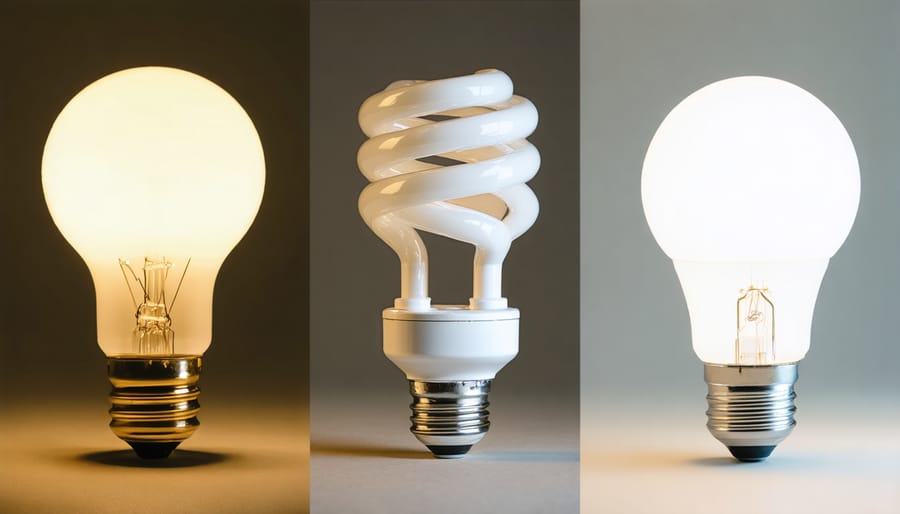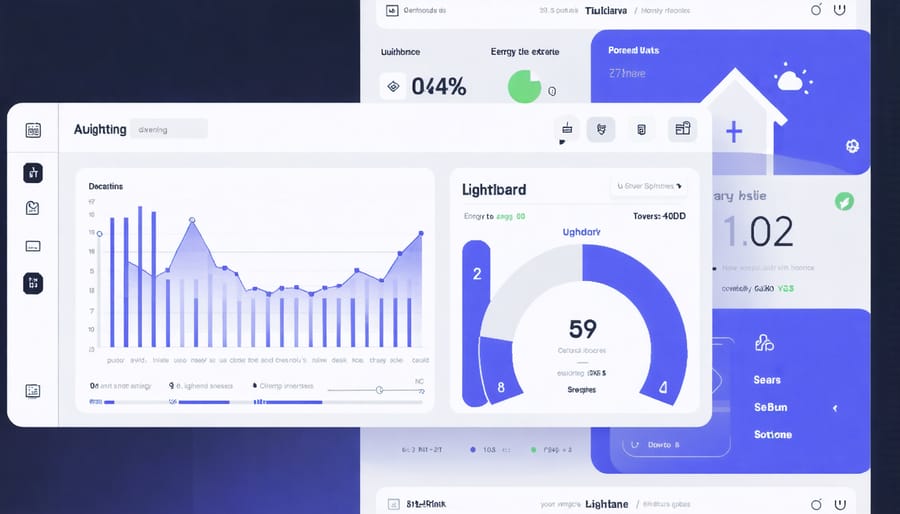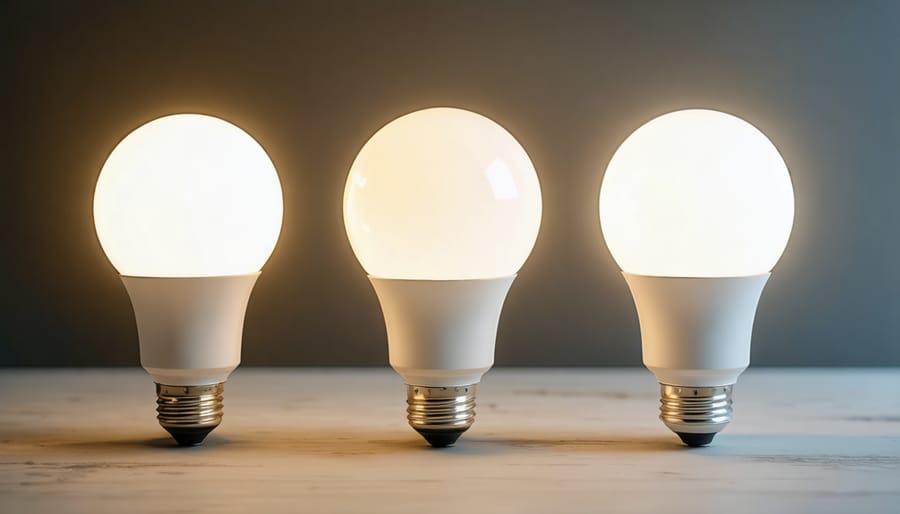
Smart LED Lighting Cuts Your Energy Bills in Half (Here’s How)
Transform your home’s energy footprint and slash electricity bills by embracing modern lighting solutions that combine cutting-edge efficiency with stunning aesthetics. LED technology now delivers the same warm, inviting glow as traditional bulbs while consuming up to 90% less power and lasting 25 times longer. Smart lighting systems let you control brightness, color, and timing from your smartphone, automatically adjusting to natural light patterns and occupancy, creating the perfect ambiance while maximizing savings. Whether you’re upgrading a single room or retrofitting an entire property, energy-efficient lighting represents one of the fastest returns on investment in home improvement, typically paying for itself within 12-18 months through reduced energy costs and minimal maintenance needs. The latest generation of energy-efficient fixtures and bulbs offers unprecedented versatility, from dimmable options to color-changing capabilities, making it easier than ever to create the perfect lighting solution for any space.
The Evolution of Home Lighting Technology
From Incandescent to Smart LEDs
The evolution from traditional incandescent bulbs to modern LED lighting solutions represents a dramatic leap in energy efficiency. While incandescent bulbs convert just 5% of energy into light (with 95% lost as heat), LEDs use up to 90% less energy while lasting 25 times longer. Smart LEDs take this efficiency further by adding features like automated scheduling, dimming capabilities, and mobile app control. The shift from warm, inefficient incandescents to sophisticated LED technology not only cuts energy bills significantly but also offers unprecedented control over home lighting. Today’s smart LEDs can adjust color temperature, integrate with home automation systems, and even learn from your daily routines to optimize energy usage automatically.

Why Smart LEDs Are Game-Changers
Smart LEDs are revolutionizing home lighting with their incredible versatility and energy-saving capabilities. These innovative bulbs can be controlled remotely through smartphone apps or voice commands, allowing you to adjust brightness, color, and timing from anywhere. Want to set the perfect mood for dinner? Simply dim the lights from your phone. Need to ensure your lights are off while you’re away? Check and control them from any location.
The real game-changer is their ability to learn and adapt to your routines. Smart LEDs can automatically adjust based on time of day, occupancy, or even natural light levels. They integrate seamlessly with home automation systems, making it easy to create scheduled lighting scenes or coordinate with other smart devices. Plus, with features like energy usage tracking and automated schedules, these intelligent bulbs help optimize your power consumption while maintaining perfect lighting throughout your home.
Smart Features That Save Real Money
Motion Sensors and Occupancy Detection
Motion sensors and occupancy detectors are game-changers when it comes to reducing energy waste from lighting. These smart devices automatically turn lights on when someone enters a room and off when the space is vacant, eliminating the all-too-common problem of lights being left on in empty rooms.
Installing motion sensors is particularly effective in spaces with irregular foot traffic, like bathrooms, garages, and storage areas. Most modern sensors can be adjusted for sensitivity and timing, allowing you to customize how long lights stay on after the last detected movement.
For larger spaces or commercial settings, more sophisticated occupancy detection systems use multiple sensors and can even track movement patterns to optimize lighting zones. These systems can reduce lighting energy costs by 30-75%, depending on the space and usage patterns.
The latest smart motion sensors can integrate with your home automation system, providing detailed usage data and allowing you to fine-tune settings through your smartphone. Some models even learn your routines over time, automatically adjusting to your household’s patterns for maximum efficiency while maintaining convenience.
Scheduling and Dimming Capabilities
Modern lighting systems offer impressive scheduling and dimming features that can dramatically reduce your energy consumption. With smart controls, you can program your lights to automatically adjust throughout the day based on natural light levels, occupancy, or specific time schedules.
Most smart lighting systems allow you to create custom schedules through smartphone apps or home automation systems. For example, you can set outdoor lights to turn on at sunset and off at sunrise, or program indoor lights to gradually brighten in the morning and dim in the evening. These automated schedules ensure lights aren’t accidentally left on when not needed.
Dimming capabilities are another powerful energy-saving feature. By reducing light output to 50%, you can cut energy usage by about 40%. Many systems offer motion sensors that automatically dim or brighten lights based on room occupancy. Some advanced options even integrate with natural light sensors to maintain optimal lighting levels while minimizing electricity use.
For maximum efficiency, consider setting up different lighting “scenes” for various activities. A movie night scene might dim lights to 30%, while a cooking scene might brighten task lighting to 100% only in the kitchen area.
Integration with Smart Home Systems
Modern energy-efficient lighting systems truly shine when combined with smart home integration. Using smart hubs like Amazon Alexa, Google Home, or Apple HomeKit, you can create automated lighting schedules, adjust brightness based on natural light levels, and control your lights remotely. Motion sensors can automatically turn lights off in empty rooms, while preset scenes can adjust multiple lights simultaneously for different activities or times of day. Voice commands make it easy to control your lighting hands-free, and smartphone apps let you monitor and adjust your home’s lighting from anywhere. This automation not only enhances convenience but can reduce energy waste by ensuring lights are only on when needed.

Installation and Setup Made Simple
Choosing the Right Smart Lighting System
When selecting a smart lighting system, compatibility should be your first consideration. Look for systems that work with your existing home automation setup, whether you’re using Amazon Alexa, Google Home, or Apple HomeKit. Popular options like Philips Hue and LIFX offer extensive compatibility and feature sets, while newer brands like Wyze provide budget-friendly alternatives without sacrificing quality.
Consider the type of control you want. Some systems offer simple on/off and dimming capabilities, while others include color-changing options and advanced scheduling features. For most homes, a mix of standard white bulbs and a few color-changing lights in entertainment areas provides the best balance of functionality and cost.
Installation requirements are equally important. While most smart bulbs simply screw into existing fixtures, some systems require a hub or bridge device. Factor in these additional components when comparing costs. Also, check your home’s WiFi coverage, as smart lights need reliable connectivity to function properly.
Start with a starter kit in one room to test the system before expanding. This approach helps you understand the features and ensure the system meets your needs without a significant upfront investment.

Step-by-Step Installation Process
Before starting any lighting installation, turn off the power at the circuit breaker. For basic LED bulb replacements, simply unscrew your old bulbs and replace them with LED alternatives, making sure to match the base type and size.
For smart lighting systems, start by installing the central hub near your wireless router. Connect it to power and follow the manufacturer’s app setup instructions. Once your hub is online, add your smart bulbs one at a time by screwing them in and using the app to detect new devices.
Installing motion sensors requires mounting them at optimal heights – typically 6-8 feet high for wall sensors and directly above doorways for entry detection. Most modern sensors come with adhesive strips or simple mounting brackets.
For complete fixture replacement, remove the old fixture carefully after confirming power is off. Connect the new fixture’s wires to your home’s wiring (black to black, white to white, and ground to ground), then secure the mounting bracket. Always use wire nuts and electrical tape for safe connections.
Remember to test all new installations thoroughly before considering the job complete. If you’re unsure about any electrical work, consult a licensed electrician.
Maximizing Your Energy Savings
Optimal Settings for Different Rooms
Each room in your home serves a different purpose and requires specific lighting solutions to maximize energy savings. In living rooms, combine ambient LED ceiling lights with task lighting near reading areas. Use warm white bulbs (2700-3000K) to create a cozy atmosphere while maintaining energy efficiency.
For kitchens, install bright, cool white LEDs (3500-4000K) under cabinets and over workspaces. Consider motion sensors for pantries and storage areas where lights are often left on accidentally.
Bedrooms benefit from dimmable warm white LEDs with smart controls for gradual wake-up lighting. In bathrooms, combine efficient vanity lighting (90+ CRI) with moisture-resistant recessed LEDs.
Home offices need adjustable task lighting with natural white bulbs (4000-5000K) to reduce eye strain. For outdoor spaces, use solar-powered LED pathway lights and motion-activated security fixtures that automatically adjust based on ambient light levels.
Remember to layer your lighting in each room using a mix of ambient, task, and accent lights for both functionality and efficiency.
Maintenance Tips for Long-Term Efficiency
Regular maintenance of your energy-efficient lighting system is key to ensuring optimal performance and longevity. Start by dusting your light fixtures, bulbs, and sensors monthly – dust buildup can reduce light output by up to 25%. For LED bulbs, check connections periodically to ensure they’re secure and free from corrosion.
Keep a maintenance schedule for your smart lighting system. Test motion sensors and timers every three months to confirm they’re working correctly. Update your smart lighting app and firmware when new versions become available, as these often include energy-optimization improvements and security patches.
Monitor your bulbs’ performance and replace them before they start flickering or dimming significantly. While LEDs last much longer than traditional bulbs, their efficiency can decrease over time. Check your lighting schedule seasonally and adjust timers to match changing daylight hours.
For outdoor fixtures, inspect weather seals and clean any debris that might affect performance. Consider using a soft, damp cloth to clean fixtures and diffusers, avoiding harsh chemicals that could damage protective coatings. Keep your lighting system’s user manual handy and document any maintenance performed for future reference.
Making the switch to energy-efficient lighting is one of the smartest investments you can make for your home or business. Not only does it significantly reduce your monthly energy bills, but it also contributes to a greener planet while creating more comfortable living and working spaces. By implementing LED bulbs, smart controls, and motion sensors, you can expect to see energy savings of up to 75% compared to traditional lighting systems.
The initial cost of upgrading your lighting may seem daunting, but the long-term benefits far outweigh the investment. With most LED bulbs lasting 15-25 years and smart systems becoming more affordable, you’ll recover your costs through energy savings within just a few years. Plus, many utility companies offer rebates and incentives for energy-efficient lighting upgrades, making the transition even more affordable.
Take the first step today by replacing your most frequently used bulbs with LED alternatives. As you become more comfortable with the technology, gradually expand your energy-efficient lighting system throughout your space. Remember, every small change adds up to significant savings and a more sustainable future for all of us.
